Bells of Ireland (Moluccella Laevis): Plant Grow & Care Guide
Written by Iris
Nov 13 2021
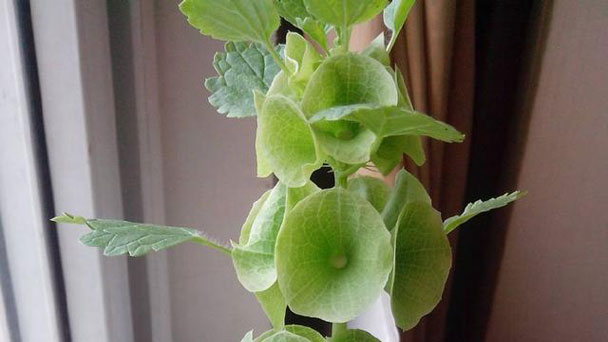
Bells of Ireland (Moluccella laevis) is always a standout among garden plants, and sports green, bell-shaped calyxes on long, stringy stems. The Bells of Ireland flowers are tiny, white, and often fragrant. Mostly as a cut flower, Bells of Ireland plant also make a stunning accent plant in a mixed border or a container garden.
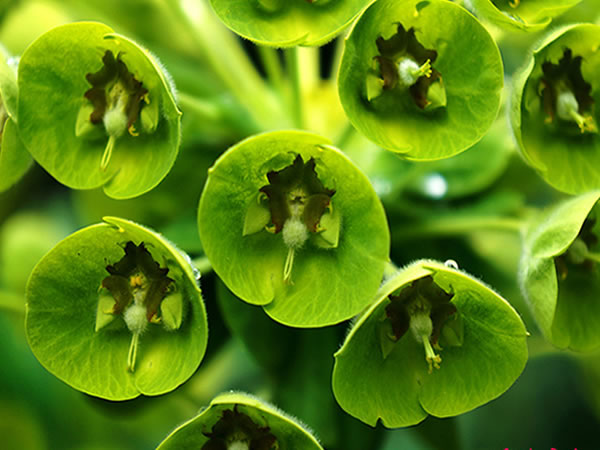
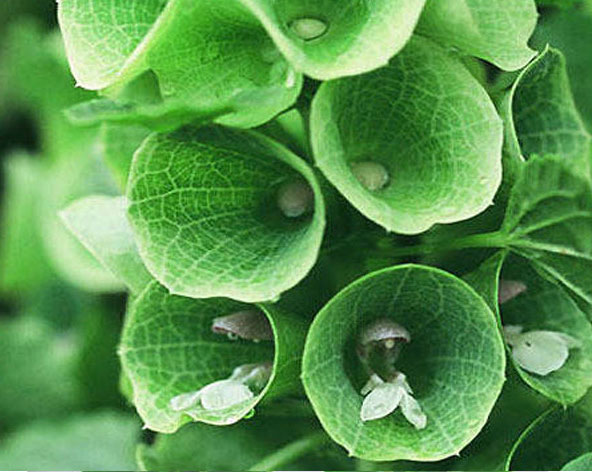
Bells of Ireland mainly grow in the summer months. It's best to plant it in the spring months so that it will be able to withstand the heat of the summer. After the plant has been transplanted, it should not be significantly watered. If you notice your plant is wilting, it can take 5 or more days for it to recover. If the soil around your Bells of Ireland Plant is saturated, it's important to wait until the excess water has drained before you add more water.
This type of plant requires fertilization once a week. About six weeks after you've planted it, it should start to produce flowers. Your plant should produce flowers for about 6 months.
Moluccella laevis will also respond well to molasses and various sources of sugar. Molasses and many types of sugar are minerals. Molasses is also a good organic fertilizer. If you are going to use molasses as a fertilizer source, then dissolve it in water before applying it. Giving your plants molasses will not only help their growth, but it will help combat wilting.
Bells of Ireland plant is a delicate plant, so you should not fertilize them frequently. Also, you need to be careful of the number of fertilizers you use. It is easy to overfeed your plant when you first start fertilizing. If your plant starts growing more slowly, this may be a sign that it has been fertilized too much.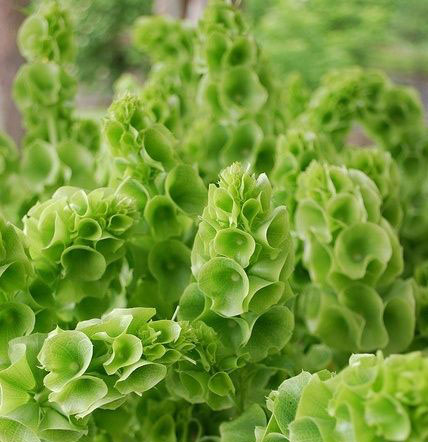
Crown Rot: bells of ireland plants wilt and die back at the soil line. Burpee Recommends: Remove affected plants and do not plant in the same area.
Aphids: Greenish, red, black or peach-colored sucking insects can spread disease as they feed on the undersides of leaves. They leave a sticky residue on foliage that attracts ants. Burpee Recommends: Introduce or attract natural predators into your garden such as lady beetles and wasps which feed on aphids. You can also wash them off with a strong spray, or use an insecticidal soap.
Spider Mites: These tiny spider-like pests are about the size of a grain of pepper. They may be red, black, brown, or yellow. They suck on the plant juices removing chlorophyll and injecting toxins that cause white dots on the foliage. There is often webbing visible on the Bells of Ireland plant. They cause the foliage to turn yellow and become dry and stippled. They multiply quickly and thrive in dry conditions. Burpee Recommends: Spider mites may be controlled with a forceful spray every other day. Try hot pepper wax or insecticidal soap. Check with your Cooperative Extension Service for miticide recommendations.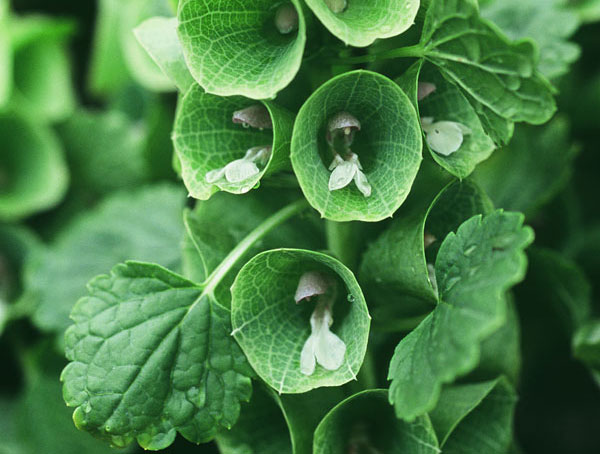
When to Grow Bells of Ireland PlantHow to Grow Bells of Ireland PlantHow to Care for Bells of Ireland PlantBells of Ireland LightingBells of Ireland Soil CareBells of Ireland WateringBells of Ireland FertilizerBells of Ireland PruningBells of Ireland Pests & Diseases CareVarieties of Bells of Ireland PlantBells of Ireland Plant Care FAQIs Bells of Ireland deer resistant?Can I grow Bells of Ireland in a container?Does Bells of Ireland self-sow?Is Bells of Ireland really from Ireland?
When to Grow Bells of Ireland Plant
To enjoy their beauty during summer, you can start growing bells of Ireland in the early spring. The seeds of this plant are relatively slow to germinate. Therefore, it will take about one to two months before the seeds produce shoots. You may increase the growth rate by stratifying the seeds in the fall. It is done by layering the seeds using the paper towel and refrigerate them for one week. Although the plant is best to be planted in a warm climate, those who live in the location with a cold climate can grow it under certain circumstances. For instance, bells of Ireland seeds need to be planted indoor during winter. After the weather gets warmer in the spring, the seeds can be moved outside to the garden.
How to Grow Bells of Ireland Plant
- Prechilling the bells of ireland plant seeds for 1-2 weeks at about 40 degrees F can aid germination.
- Direct sow seeds in average soil with good drainage in full sun after danger of heavy frost.
- Prepare the soil by removing weeds and working organic matter into the top 6-8 inches of soil; then level and smooth.
- Most plants respond well to soils amended with organic matter. Compost is a wonderful form of organic matter with a good balance of nutrients and an ideal pH level, it can be added to your planting area at any time. If compost is not available, top dress the soil after planting with 1-2 inches of organic mulch, which will begin to breakdown into compost. After the growing season, a soil test will indicate what soil amendments are needed for the following season.
- Sow Bells of Ireland Plant seeds about 12 inches apart and cover with ¼ inch of fine soil.
- Firm soil lightly with your hand, water and keep evenly moist.
- Seedlings will emerge in 7-14 days.

How to Care for Bells of Ireland Plant
Bells of Ireland Lighting
Full sun is best for growing bells of Ireland plant. The plants need at least some morning sun to prevent them from growing too leggy, which makes them prone to flopping. Plants in shady locations will almost certainly need staking.Bells of Ireland Soil Care
Choose a planting site with good drainage and at least average soil. It doesn’t need extremely rich soil to do well. If you’re planting into the native soil, work compost into the first 6-8″ of soil to improve it a bit before planting in.Bells of Ireland Watering
Moluccella laevis is a perennial herb that can grow up to 3 feet. In each plant, multiple vines will twist and grow upwards, coming in contact with one another as they grow. To get the most flowers, it's important to support the vines as they grow with stakes. This will enable the vines to climb on top of one another and fill your garden with the most flowers.Bells of Ireland mainly grow in the summer months. It's best to plant it in the spring months so that it will be able to withstand the heat of the summer. After the plant has been transplanted, it should not be significantly watered. If you notice your plant is wilting, it can take 5 or more days for it to recover. If the soil around your Bells of Ireland Plant is saturated, it's important to wait until the excess water has drained before you add more water.
This type of plant requires fertilization once a week. About six weeks after you've planted it, it should start to produce flowers. Your plant should produce flowers for about 6 months.
Bells of Ireland Fertilizer
One easy way to fertilize Bells of Ireland plant is by adding compost or manure. That's not the only way, of course. You can use a commercial dry or liquid fertilizer, but manures are best. Manures are especially beneficial for a decorative garden where growth is not the primary focus. Fertilizing plants on a monthly basis will ensure they look beautiful and glossy most of the time.Moluccella laevis will also respond well to molasses and various sources of sugar. Molasses and many types of sugar are minerals. Molasses is also a good organic fertilizer. If you are going to use molasses as a fertilizer source, then dissolve it in water before applying it. Giving your plants molasses will not only help their growth, but it will help combat wilting.
Bells of Ireland plant is a delicate plant, so you should not fertilize them frequently. Also, you need to be careful of the number of fertilizers you use. It is easy to overfeed your plant when you first start fertilizing. If your plant starts growing more slowly, this may be a sign that it has been fertilized too much.

Bells of Ireland Pruning
There are no particular pruning needs for the bells of Ireland plant as it is not an aggressive grower. However, if you don’t want the plant to exceed a certain height, or find the plant getting bushier than you like, you can always use gardening scissors to trim it down.Bells of Ireland Pests & Diseases Care
Cercospora Leaf Blight: Small flecks which develop a yellowish halo appear on the Bells of Ireland Plant leaves and turn brown and coalesce. They can cause the leaves to wither and die. Burpee Recommends: Remove infected plants and destroy all plant debris.Crown Rot: bells of ireland plants wilt and die back at the soil line. Burpee Recommends: Remove affected plants and do not plant in the same area.
Aphids: Greenish, red, black or peach-colored sucking insects can spread disease as they feed on the undersides of leaves. They leave a sticky residue on foliage that attracts ants. Burpee Recommends: Introduce or attract natural predators into your garden such as lady beetles and wasps which feed on aphids. You can also wash them off with a strong spray, or use an insecticidal soap.
Spider Mites: These tiny spider-like pests are about the size of a grain of pepper. They may be red, black, brown, or yellow. They suck on the plant juices removing chlorophyll and injecting toxins that cause white dots on the foliage. There is often webbing visible on the Bells of Ireland plant. They cause the foliage to turn yellow and become dry and stippled. They multiply quickly and thrive in dry conditions. Burpee Recommends: Spider mites may be controlled with a forceful spray every other day. Try hot pepper wax or insecticidal soap. Check with your Cooperative Extension Service for miticide recommendations.
Varieties of Bells of Ireland Plant
You may see bells of Ireland called shellflower or referred to by their botanical name, Moluccella laevis. In Australia, they've also known as Molucca balm or Moluccella balm. The “Pixie Bells” cultivar grows to just 18-24 inches (as opposed to the standard two-to-three-foot size), making it an excellent choice for growing these gorgeous flowers in containers.
Bells of Ireland Plant Care FAQ
Is Bells of Ireland deer resistant?
Yes, it can be deer resistant, even rabbit resistant.Can I grow Bells of Ireland in a container?
Yes, you can grow bells of ireland in a large container, especially smaller varieties such as Pixie Bells.Does Bells of Ireland self-sow?
Yes, it does tend to self-sow in the garden. Allow some flowers at the end of the season to dry on the plant.Is Bells of Ireland really from Ireland?
No, it recalls the Emerald Isle as a rare green flower in the garden (actually the flowers are tiny white flowers in the green bell-shaped calyxes). It is native to Turkey, Syria, and the Caucasus.Latest Updated
- Benefits of Bugleweed - 7 Science-backed Health Benefits
- Bugleweed Dangers & Side Effects - Is It Poisonous?
- How to Plant Evergreen Trees - What You Should Know
- When to Plant Evergreens - Grow Guide for Evergreen Trees
- 12 Wonderful Evergreen Shrubs for Your Garden
- 12 Popular Evergreen Plants with Pictures for Beginners
- When And How To Prune A Lilac Bush Like a Pro
- How to Grow & Care for Lilac Vine (Hardenbergia Violacea)
- Japanese Lilac Tree (Syringa Reticulata) Care & Propagation Guide
- Shumard Oak Pros and Cons - What to Know
Popular Articles
- Winter maintenance of Antirrhinum Majus
- How to Grow Terminalia Mantaly Tree
- How to Grow and Care for Crossostephium Chinense
- How to grow Antirrhinum Majus in spring
- Peristeria Elata (Dove Orchid) Profile: Info & Care Guide
- Underwatered Snake Plant (Sansevieria Trifasciata) - Signs And How To Fix
- How to Care for Brazilian Jasmine Plant (Mandevilla Sanderi)
- How to Grow & Care for Graptopetalum Purple Delight in Summer
- Rosa Chinensis (China Rose): Plant Growing & Care Tips
- How to Care for Baby Sun Rose (Aptenia Cordifolia)